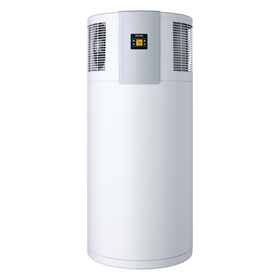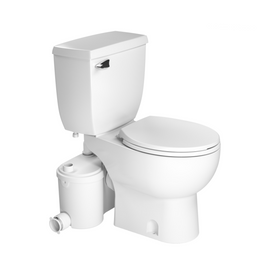
LEED for Homes 101: Indoor Environmental Quality
Last Updated: Feb 11, 2025How often have you walked into your own home and noticed a specific smell? Does that ever concern you? It's worth paying attention to, as indoor air quality has a significant effect on your health. Rule #1: Clean air has no smell, so that's the goal.
Have you been following along with our LEED for Homes series? If so, you may have already read about many of the best practices of making your home more sustainable. Since "sustainability" is such a massive topic, we've broken it down into manageable components: Location & Transportation, Sustainable Sites, Water Efficiency, and two under the Energy category (prerequisites and credits). Last month, we looked at what is arguably the most interesting section, Materials & Resources.
Given how much time people are now spending at home, today's topic is perhaps the most important and timely: indoor environmental quality—or in other words, a healthy home.
Table of Contents
- Why Should I Care About My Home's Air Quality?
- How Do I Make Sure My Home's Indoor Air Is Healthy?
- Pillar 1: Source Reduction
- How Do I Reduce Indoor Air Pollutants in My Home?
- How Can You Control Contaminants at Home for LEED Certification?
- How Can You Get LEED Points With "Low-Emitting Products"?
- Pillar 2: Ventilation
- How Do I Properly Ventilate My Home for LEED Certification?
- Pillar 3: Air Filtration
- How Do I Filter the Air in My Home?
- Bottom Line

Why Should I Care About My Home's Air Quality?
According to the US Environmental Protection Agency (EPA), concentrations of some pollutants indoors can be two to five times higher than outdoors. This reality is due to several factors, including tighter, more energy-efficient building envelopes, chemical usage from cleaning supplies and pesticides, and growth in synthetic home furnishings and building materials. Polluted indoor air can be unpleasant by itself. Still, more concerning, it can cause adverse health effects such as respiratory disease, headaches, fatigue, and irritation of the eyes, nose, and throat—and, in the case of more dangerous pollutants like radon, cancer.
How Do I Make Sure My Home's Indoor Air Is Healthy?
I think about indoor air quality in terms of three pillars. It all begins with what might be contaminating your air in the first place, so we'll look at reducing the source of pollutants. Next, assuming you can't control all contaminants, it's important to ventilate your indoor air. And finally, air filtration helps decontaminate your air. LEED addresses each of these with various prerequisites (the most important components when building a remodeling a home) and credits, so let's dive in.
Pillar 1: Source Reduction

How Do I Reduce Indoor Air Pollutants in My Home?
Air pollutants can come from many different places. The LEED rating system starts with two prerequisites that limit the two most deadly pollutants: carbon monoxide from a car in the garage and radon. (We shouldn't have to say this, but eliminating exposure to tobacco smoke might be step one.)
Garage Pollutant Protection
A single-family home with an attached garage may seem like the utmost in luxuries—you don't have to go outside to get into your car and do the multitude of other activities people tend to relegate to the garage. The problem? Most cars are still gas-powered, and when running, they produce the deadly gas carbon monoxide. To protect homeowners, LEED requires that no air-handling equipment or ductwork be located inside the garage (unless it is only serving the garage).
In addition, all shared surfaces between the garage and the home must be tightly sealed. All connecting floor and ceiling joist bays must be sealed, and any doors into the garage must be weather-stripped, as though it is an exterior door. These measures help protect conditioned spaces from carbon monoxide emissions and other harmful odors, like paints and chemicals stored in the garage.

Radon Resistant Construction
Radon is an odorless, colorless, radioactive gas. According to the EPA, radon is the second leading cause of lunch cancer after cigarette smoking. While radon is naturally occurring, the good news is that homeowners can limit exposure by addressing it early in the home's construction. And, it may only cost between $250 and $750, depending on the location and size of the house.
The first step is to check if your house is located in a higher-risk zone. If you live in a high-risk area, you'll want to make sure you follow radon-resistant construction techniques, which you can find on the EPA website or in the LEED prerequisite documentation.

The basic tenants include providing:
- A capillary break (usually polyethylene sheeting) at all crawlspace floors, according to the US EPA Indoor airPLUS Construction Specifications.
- A gas-tight vertical vent pipe with a minimum diameter of 3-4 inches / 8-10 cms. This pipe must not have any bends greater than 45 degrees and must extend at least 12 inches / 30 cm above the roof's opening.
- If needed, a radon fan or an accessible electrical outlet near the vent pipe will allow for future fan installation.
For existing homes, read more about radon testing and mitigation.
Note: any home that earns the Environmental Protection Agency's (EPA's) Indoor airPLUS label automatically meets these LEED prerequisites. You can learn more about it from Rise here.
After controlling for those deadly indoor air pollutants, LEED awards points for going the extra mile by preventing not-so-deadly contaminants and ensuring only low emitting products enter the house.

How Can You Control Contaminants at Home for LEED Certification?
A house can earn LEED points—and be a healthier home—by reducing exposure to indoor airborne contaminants like dirt, dust, pollen, and other allergens. How? Here are some reasonably easy tactics:
- Install permanent walk-off mats at every main entryway that are at least 4 feet / 1.2 meters long and are easily cleaned. These can include grates or any slotted surface you can clean from underneath. (Interestingly, LEED allows for removable entryway mats only if they are maintained by a contracted cleaning service every week.)
- Have a permanently installed shoe removal and storage area at the main entry. (Adhering to a shoe removal policy may lead to some awkward conversations with guests!)
- Seal all ducts and vents during construction so they do not become contaminated with construction debris, like drywall dust. Then, once construction is complete, conduct a "pre-occupancy" flush—meaning open all the windows and doors and run the HVAC system and fans continuously for 48 hours.
- Install an ENERGY STAR-rated exhaust fan in the utility room or the garage that vents directly outside and provides at least three air changes per hour. A garage fan should have a timer linked to an occupancy sensor, a light switch, a garage door opening-closing mechanism, or a carbon monoxide sensor.
Pillar 2: Ventilation
Pillar 3: Air Filtration

Bottom Line
The three pillars of healthy indoor air are:
- Prevent contaminants from entering your house in the first place through source reduction.
- Reduce exposure to pollutants through ventilation.
- Filter your air.
Each of these complements one another to limit exposure to unhealthy VOCs, gases, formaldehyde, and other pollutants that can cause respiratory illnesses. The LEED section on Indoor Environmental Quality might be the most critical component of a sustainable home. After all, if you don't have your health, it's hard to focus on saving energy, water, money, and the bees!
Melissa Rappaport Schifman
Melissa became the Twin Cities’ fifth LEED for Homes Accredited Professional (LEED AP) and completed the work necessary to get her own home LEED Gold Certified, the basis for her book, Building a Sustainable Home: Practical Green Design Choices for Your Health, Wealth, and Soul, (Skyhorse Publishing, August, 2018). With her corporate experience in finance, marketing, and business development, and an MBA and Master’s in Public Policy from the University of Chicago, Melissa has been providing sustainability advisory services to businesses, governmental agencies and non-profits, focusing on strategic and operational change that provide bottom-line financial returns. She has led the LEED certification of two million square feet of commercial buildings, written GRI-compliant Corporate Sustainability Reports, is a LEED Pro Reviewer and LEED mentor with the U.S. Green Building Council. She is the founder of Green Intention LLC where she writes about sustainable home living.













